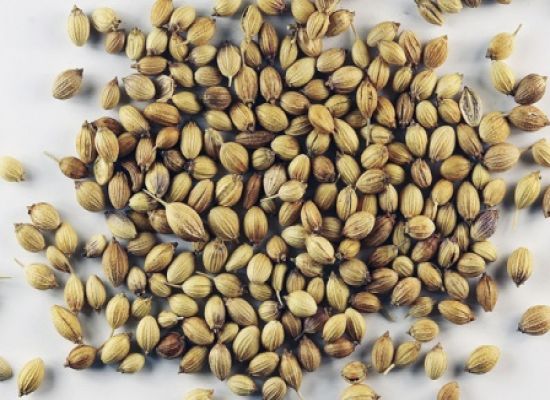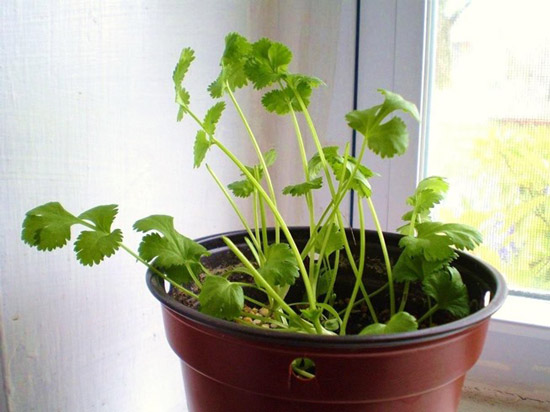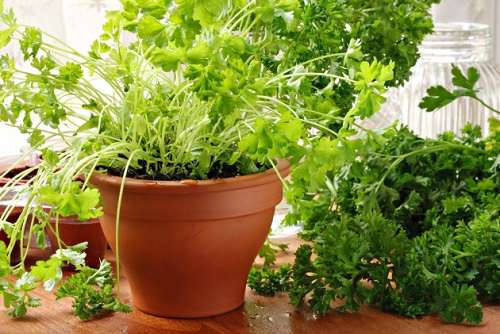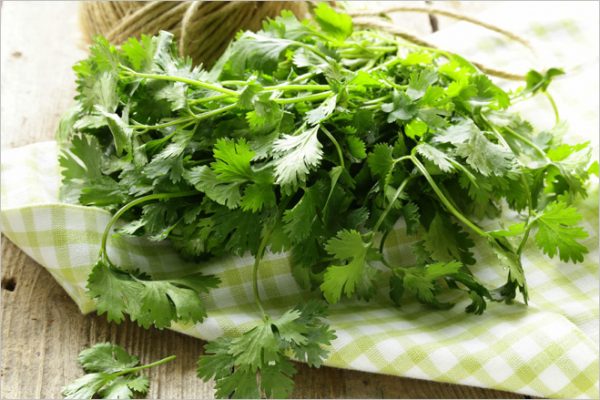Detailed instructions: how to plant cilantro correctly
Content
Which variety to choose
Before choosing a cilantro variety, you need to decide for what purpose you need a spice. If for greens, then it is better to stop the choice on vegetable varieties - they are distinguished by high aromaticity, special tenderness of the leaves and a late flowering period. If cilantro is grown for coriander, then plant varieties that produce quality seeds. The most popular vegetable varieties are:
- Avant-garde is a compact plant of small height with a dense deciduous part and a strong spicy aroma, can be planted in a house on a windowsill, balcony;
- Caribe is a compact, well leafy and late flowering variety, strongly dissected greens with a delicate taste and intense aroma;
- The King of the Market is an early ripening variety, distinguished by a significant amount of green mass, compact plants with juicy, delicate greens and a strong spicy aroma;
- Borodinsky - mid-season variety, compact, but tall (up to 70 cm) plants, greens have a mild taste, suitable for salads and decorating dishes, intended for growing in soil;
- Taiga is a late-ripening variety, but resistant to flowering, compact small plants with a dense deciduous part;
- Picnic is an early variety, a compact bush with dense toothed leaves, intense aroma and mild taste, can be planted on a windowsill.
To obtain greens and fruits, varieties that are grown only in the ground are suitable:
- Amber is a plant with a well leafy, delicate green part, the seeds have an intense spicy aroma;
- Venus is a salad variety with thick tender greens, the seeds have a mild spicy aroma, are used to flavor marinades, baked goods;
- Alekseevsky is a mid-season variety, blooms late, resistant to low temperatures, tender, spicy greens, seeds with a high content of ethers.
Landing features
To get a high yield of fragrant greens, cilantro must be properly planted, taking into account some features:
- the area where the spice is supposed to be planted should be open, sunny, or semi-shaded - it is not recommended to sow spice in the shade of trees, since the bushes grow weak, flower stalks quickly appear;
- it is better to plant plants on a flat area, or on a hill - if the culture is sown in a hollow, the plants will die from excess moisture even before ripening;
- the soil in which it is planned to plant cilantro should be nutritious and loose, if this is not the case, fertilizers should be applied: humus (0.5 buckets / 1 sq. m.) when digging, or a mineral mixture (20-30 g / 1 m sq.) in early spring;
- sowing of culture is carried out throughout the entire warm period - many gardeners prefer to sow cilantro in the country several times per season in open ground, so fresh greens are available all summer and autumn;
- before sowing seeds in the ground, the site must be dug up and well moistened;
- you can sow seeds at any time and according to any scheme: randomly, in rows, in holes;
- sowing is carried out with dry seeds: 2-3 seeds are laid at a distance of about 10 cm - if sown thicker, the plants will poorly increase the green mass, and flower stalks will appear early;
- the rows in which the seeds will be planted should be located at a distance of at least 15 cm - the plants will not darken each other, and this will facilitate the care of the garden;
- cilantro has large seeds with a dense shell, so they are sown shallowly (1.5-2 cm);
- It is possible to sow seeds in open ground already in mid-April, when the earth has warmed up and saturated with moisture - to get several harvests per season, sowing seeds is carried out at intervals of 2 weeks.
To grow spices at home on a windowsill, sowing is carried out in early March. In long boxes, seeds can be sown immediately at a distance of 5-6 cm, in pots, or glasses should be planted with 2 seedlings. The planted seeds need to create greenhouse conditions for germination - cover the container with film or glass until the first shoots appear.
Growing cilantro on a windowsill requires additional lighting. This is especially necessary if planting is carried out in winter, or in early spring, when the daylight hours are short. Providing the plants with all the conditions necessary for growth, the first crop of greens can be harvested within 3 weeks after sowing. If desired, cilantro seedlings grown on the windowsill can be planted in the open field in the country. This method is often practiced by gardeners, as it allows you to grow fresh greens much earlier than is possible if you sow seeds directly into the soil. In addition, plants grown from seedlings do not require intensive care.
In the cold season, cilantro can be grown not only on the windowsill, but also in greenhouses. It is quite cold-resistant, tolerates frost calmly. Providing minimal care and a sufficient amount of light and moisture, you can get fresh greens from the first days of spring.
Video "Practical recommendations on how to plant greens at home"
Informational video with practical tips and tricks on how to plant greens at home.
Cilantro care
Taking care of the spice does not cause much trouble, however, it must be done correctly and regularly. In favorable conditions, seedlings begin to appear in the second week after the sowing of the seeds has taken place. During this period, all care, as a rule, consists only in systematic watering. You need to water a week no more than 2 times, at the rate (4-5 l / 1 sq. M.) This dosage is acceptable for the growing season, when the plants are gaining green mass. During the period of seed ripening, watering should be reduced to 2 l / 1 sq. M.
When plants reach a height of 2-3 cm, they must be thinned out. Pulling out excess shoots, you need to make sure that only the strongest remain on the garden bed, and the distance between them is at least 6 cm. Further care of the plants involves loosening and removing weeds. If the plants were planted at a normal distance, then weeding and loosening can be carried out using a tool, if it was necessary to sow randomly, then weeding is carried out manually. If the spice is grown on a windowsill or in a greenhouse, then caring for it consists only in regular watering and loosening the soil.
How to harvest
Cilantro, like most herbs, is harvested before the plants bloom. The greens of flowering bushes are bitter and unsuitable for consumption. To extend the harvesting period, the inflorescences of the plants should be cut off regularly as soon as they begin to set. The most spicy cilantro greens are when the plants stop growing, which means it's time for the final harvest, as flowering will then begin. During this period, the foliage is cut and used for harvesting. It is better to cut the greens in the morning.
For storage, it is recommended to dry cilantro by forming large bunches and hanging them in a dry, dark place.It is recommended to grind the spice only after complete drying. The coriander (seed) is harvested in late summer. The collection must be carried out several times within 1-2 weeks, since they ripen unevenly, and crumble as they ripen. The coriander is dried in the sun - a characteristic spicy aroma emanating from the seeds testifies to the readiness of the spice.
Video "How to grow coriander all year round"
Useful tips for growing coriander.






